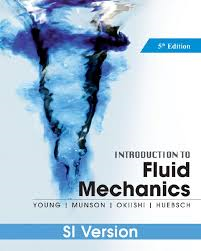COE-C2003 - Basic course on fluid mechanics, Lecture, 14.9.2021-29.10.2021
This course space end date is set to 29.10.2021 Search Courses: COE-C2003
Översikt
-
Basic Information
Name of the course: COE-C2003 Basic course on fluid mechanics
ECTS credits: 5
Period: I
Language: English
Level: Candidate level
Elective or compulsory: Compulsory
Prerequisite information: There are no compulsory prerequisites. In order to pass the course successfully, basic mathematic as well as Statics and Dynamics -courses are beneficial.
Connections to other courses
There is a single candidate program in the school of Engineering (ENG) which has three majors. In the Energia -ja ympäristötekniikka and in the Kone -ja rakennustekniikka majors, the Basic course on fluid dynamics is compulsory. The course is related to the courses of e.g. Statics and Dynamics, Thermodynamics and heat transfer, and Foundations on continuum mechanics according to Figure 1. In the study path, it is recommended to take the Basic course on fluid dynamics during the second year. If fluid mechanics starts to interest more, the topic can be studied further within the courses e.g. Fluid Dynamics and Computational fluid dynamics (Fig. 1).
Figure 1. The connections of the course 'Basic course on fluid mechanics' to other courses.
Contents
The main contents of the course are listed below:
1. The effect of pressure on a fluid
2. The Bernoulli equation, the energy equation, and the significance of losses.
3. The control volume approach
4. Conservation of mass, momentum, and angular momentum in fluid flow problems
5. Dimensional analysis on e.g. model tests
6. Pipe and boundary layer flows
VII. Introduction to Matlab
VIII. Essay writing within the field of fluid mechanics
Core content analysis
COE-C2003
Must know
Good to know
Nice to know
Knowledge
- Effect of pressure on the fluid
- Bernoully equation, energy equation and losses
- Control volume –based thinking
- Concservation of mass, momemtum, and angular momemtum
- Dimensional analysis and model experiments
- Pipe flow and boundary layer flow
X. Use of Matlab
XI. Essay on a fluid mechanics topic, deepens the points 1-6.
Reynolds transport theorem
Pathline, streakline, and streamline
Skills
- Logical thinking
- Numeracy
- Problem solving
- Calculation of forces
- Dimensioning of flow structures and machines
- Use of a widely used program
- Writing and producing logical text
- Critical thinking
General terminology of fluid mechanics
Learning outcomes (ILO)
As a student:
- you master the central terminology of fluid mechanics and you can explain the meaning of the central concepts
As a student, you can
- apply the concept of fixed control volume for a traveling fluid particle, or the concept of moving with the traveling fluid particle
- apply dimensional analysis to scale test results
- analyze the effect of pressure in a stagnant or in a moving fluid
- solve problems with Matlab
- write critically reflective and structured scientific text
As a student, you understand:
- the significance of conservation of mass, momentum, and angular momentum in fluid flow problems
- the influence of losses in fluid flow problems
- flow behavior in pipe flows or boundary layer flows
Contact teaching
The contact teaching of the course consists of weekly lectures and exercises. The lectures are on Tuesdays and on Thursdays at 10:15-11:45. More information on lectures can be found from the 'Lectures' folder. More information on the Tutoring sessions can be found from the Tutoring sessions -folder.
Course book
The course book is by Young, Munson, Okiishi, Huebsch (2011) "Introduction to Fluid Mechanics" fifth editions with DI-units.

Older versions of the book can also be used as a course book. Note that roughly similar book is also offered by the name A brief introduction to fluid mechanics. These are essentially the same books. It is also ok to use the extended version of the previously mentioned book named Fundamentals of fluid mechanics. When selecting the course book, it is good to pay attention to the units. The course book is available in both SI and in British -units. The latter may be a bit more difficult to use during the course. Also note that there is an e-book available directly from the Wiley pages. The benefit of this version is that it is immediately available after purchase.
Passing the course
The course includes some compulsory learning outcomes: exercises, an essay, and an exam. There is more information on the weekly exercises under the Exercises -tab. There will be four exams per year. The approved exercise points are valid until the starting of the next fluid mechanics -course.
The course grade is calculated as a weighted mean from the exercises, essay, quiz, and the exam. The weight of the exam is 50% and weight of the exercises plus essay plus Quiz is 50%. The weights between the exercises, essay, and Quiz are 75%/15%/10%. In the calculation of the mean grade, non-rounded sub-grades are used. In order to pass the course, the student must get at least 50% of the total exercise points, a minimum of 4/12 points from the essay, and at least 11/30 points from the exam.
The student has a right to participate to two exams. If the student is not able to pass the course after two exams, the possibility to participate to a third exam will be assessed during a mutual development discussion between the student and the responsible teacher of the course. If the student does not pass the course after three exam rounds, the student needs to register and participate to a new course with the normal university curriculum. Also the exercise points are put back to zero in this case.
